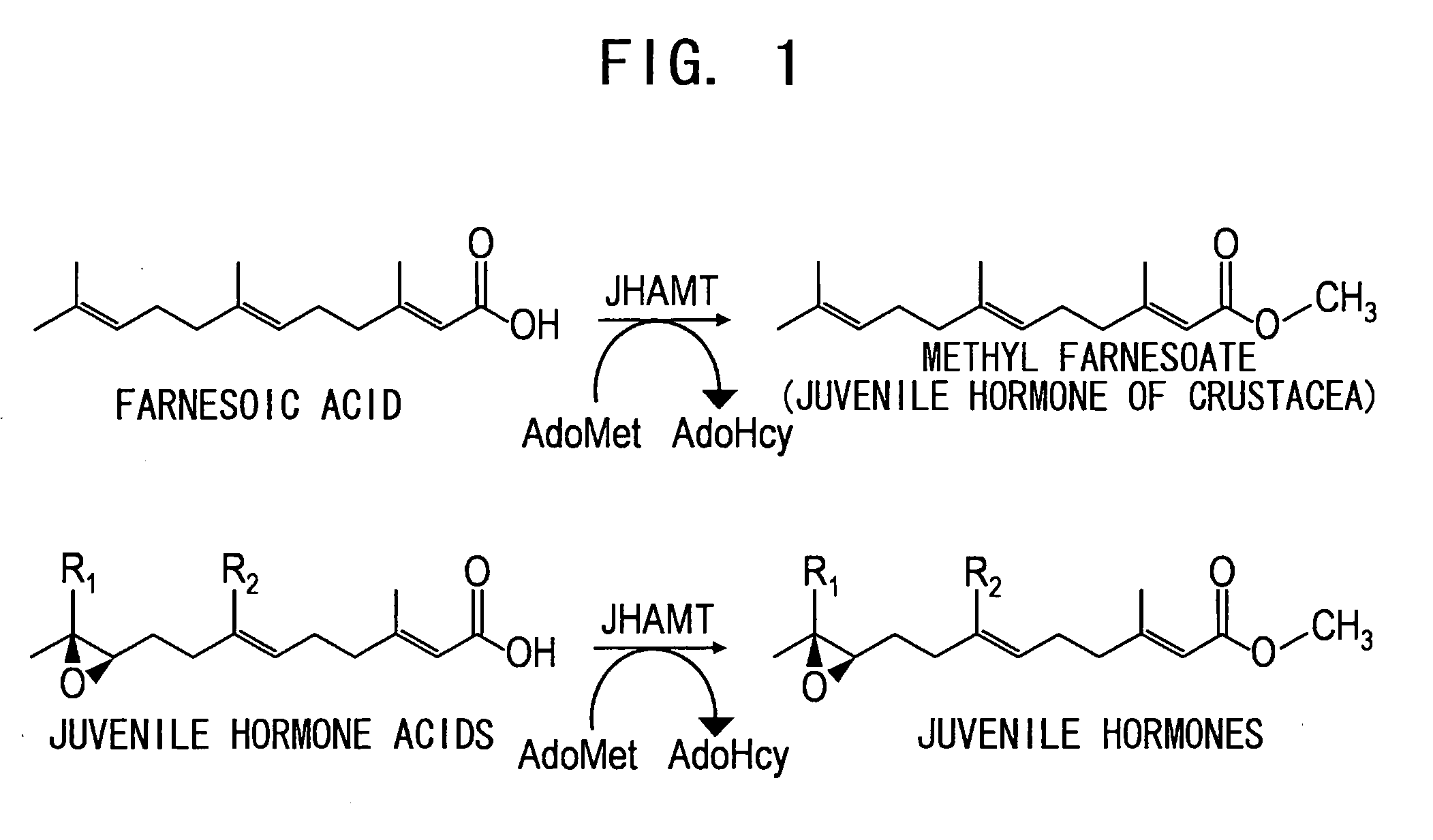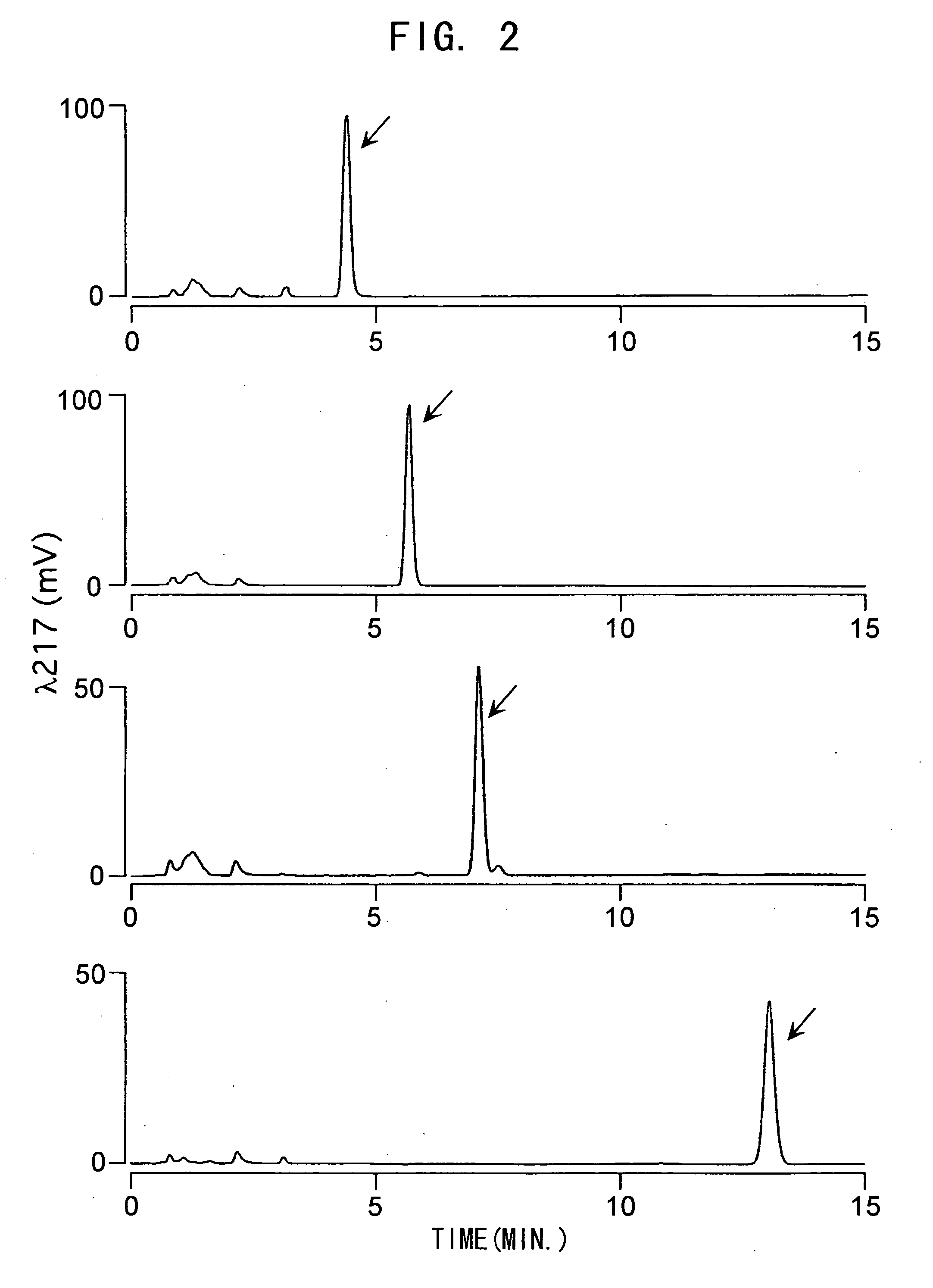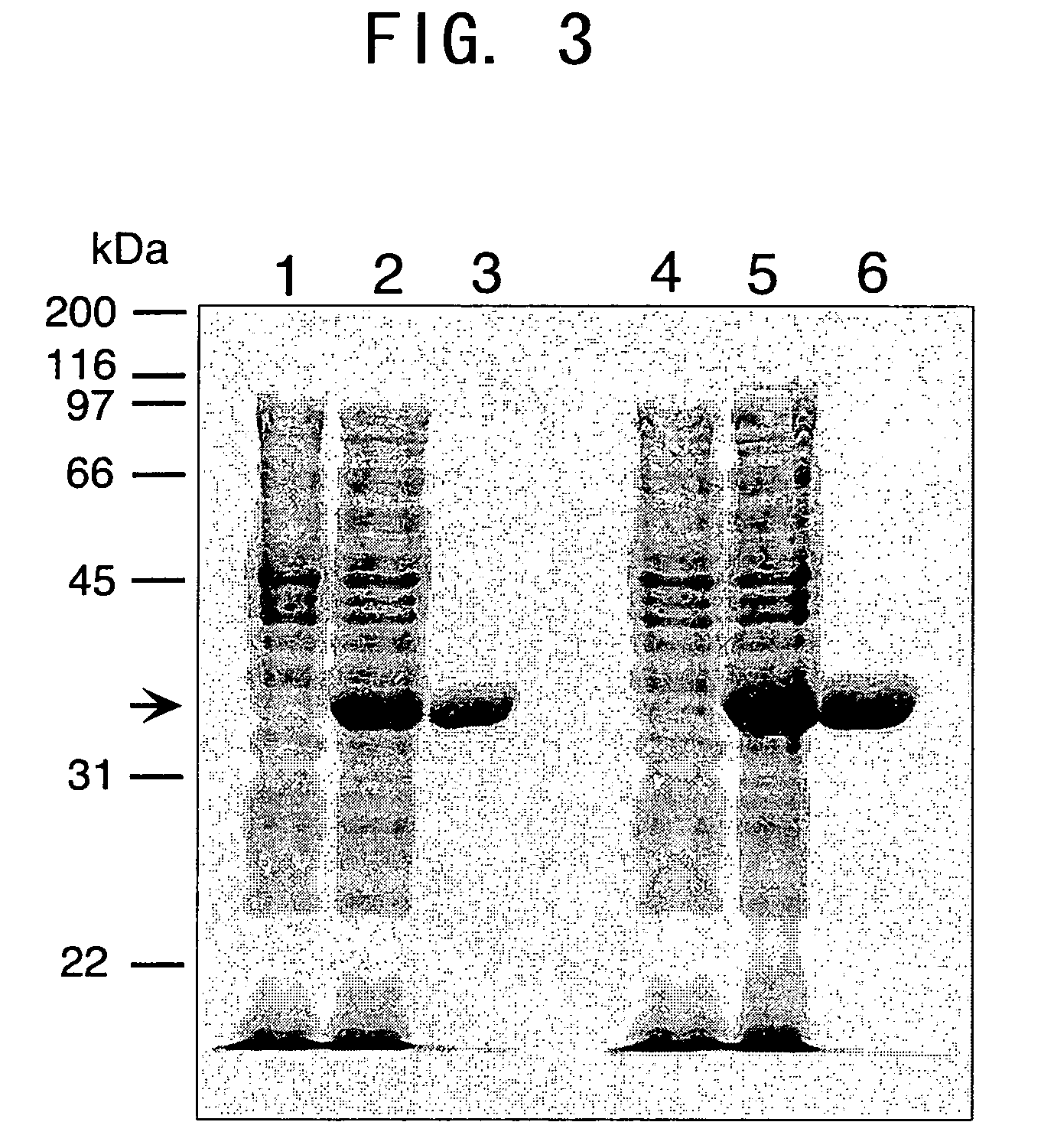Juvenile hormone transmethylase genes and method of using the same
a technology of juvenile hormone and transmethylase gene, which is applied in the field of juvenile hormone acid methyltransferase proteins, can solve the problems of ineffective precocious method, weak effect in preventing insect feeding damage, and difficulty in preparing the amount of protein needed to screen compounds that bind to enzymes, so as to achieve early metamorphosis and reduce the concentration of juvenile hormon
- Summary
- Abstract
- Description
- Claims
- Application Information
AI Technical Summary
Benefits of technology
Problems solved by technology
Method used
Image
Examples
example 1
Cloning the Juvenile Hormone Acid Methyltransferase Gene of Bombyx mori
[0201] The corpora allata is a minute tissue (diameter about 0.1 mm even in a final instar larva of Bombyx mori). Hence, in order to obtain from the corpora allata an amount of RNA necessary for cloning the juvenile hormone acid methyltransferase, many individuals must be dissected to collect their corpora allata. Bombyx mori is large and easy to dissect, with a large corpora allata compared to pests such as Drosophila melanogaster, Anopheles gambiae, Spodoptera litura, and Helicoverpa armigera. Further, large-scale breeding methods using artificial feed are established, and thus the amount of larvae of uniform growth stage necessary for the experiment may be easily gathered. The present inventors then attempted to clone the juvenile hormone acid methyltransferase gene of Bombyx mori.
[0202] RNAs were extracted from the corpora allata of Bombyx mori larvae classified into 24 steps of growth stages, from the earl...
example 2
Production of an Expression Vector Incorporating the Juvenile Hormone Acid Methyltransferase Gene
[0205] The cDNA from the corpora allata of Bombyx mori 4th instar larvae was used as a template for PCR using the BMJF primer (SEQ ID NO: 15) and BMJR primer (SEQ ID NO: 16) to amplify a region comprising the open reading frame for the gene isolated by the method of Example 1. The amplified DNA was cleaved with restriction enzymes NdeI and BamHI, followed by cloning at the NdeI-BamHI site of the Escherichia coli expression vector pET-28a(+) for producing histidine tag fusion proteins (Novagen Co.).
example 3
Preparation of Recombinant Juvenile Hormone Acid Methyltransferase Protein
[0206] The produced plasmid was introduced in to Escherichia coli BL21 (DE3) by electroporation to obtain a transformed Escherichia coli strain. The transformed Escherichia coli strain was cultured in LB medium (5 ml) comprising 50 μg / ml Kanamycin at 37° C. overnight while shaking. Then 0.2 ml of the culture solution was added to 200 ml of liquid medium, and this was cultured while shaking at 20° C. for 24 hours. The proliferated bacteria were recovered from the culture solution by centrifugation (3,500 rpm, 10 minutes, 4° C.), and frozen at −30° C. The frozen bacteria were liquified at room temperature, and then 5 ml of buffer (50 mM Tris-Cl, pH 7.5) per 50 ml of culture solution was added to suspend the bacteria. This was followed by ultrasonic disintegration while cool. After centrifugation (14,000 rpm, 15 minutes, 4° C.), the supernatant was collected, and filtered through a 0.45 μm filter, then the recom...
PUM
| Property | Measurement | Unit |
|---|---|---|
| temperatures | aaaaa | aaaaa |
| diameter | aaaaa | aaaaa |
| temperature | aaaaa | aaaaa |
Abstract
Description
Claims
Application Information
 Login to View More
Login to View More - R&D
- Intellectual Property
- Life Sciences
- Materials
- Tech Scout
- Unparalleled Data Quality
- Higher Quality Content
- 60% Fewer Hallucinations
Browse by: Latest US Patents, China's latest patents, Technical Efficacy Thesaurus, Application Domain, Technology Topic, Popular Technical Reports.
© 2025 PatSnap. All rights reserved.Legal|Privacy policy|Modern Slavery Act Transparency Statement|Sitemap|About US| Contact US: help@patsnap.com



